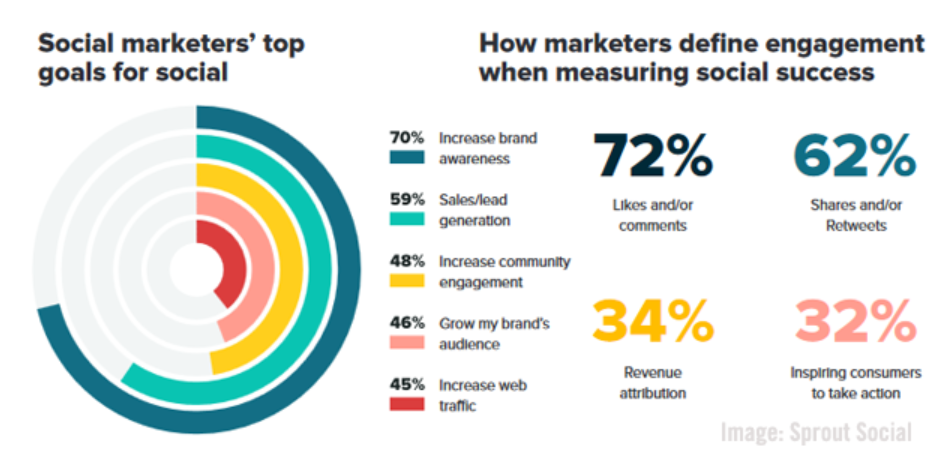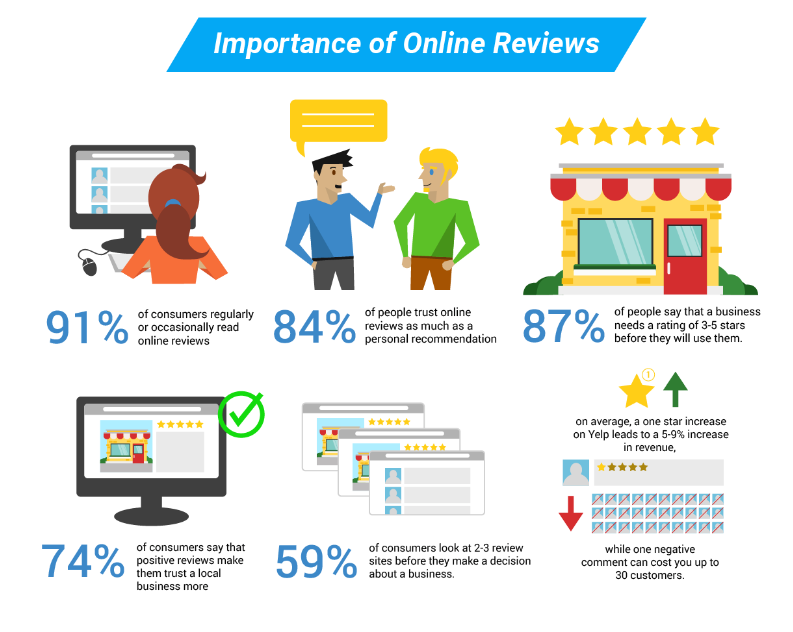Mistakes, Shopping Habits, and Digital: Explaining Marketing for Optometrists
The market for prescription eyewear in Canada is summed up in one word: volatile. While demand for contact lenses and eyewear is expected to cross $2 billion by 2029, the growth path for optometrists is anything but clear.
People are increasingly shopping for competitive pricing and convenience online. The online eyewear market is eating into offline sales by as much as 6% every year. And, as discretionary spending has soared, optometrists’ have had to focus on new revenue streams, such as offering designer frames.
Thriving in such a diverse market requires marketing for optometrists to be suitably agile. It should allow you to reach your audiences across a range of channels; all while enabling you to provide the omnichannel experience your customers expect.
Table of Contents
ToggleLet’s Take a Look at Optometrist Marketing Right Now
Optometrists Are Too Busy to Market Actively
Given you have patients to attend to, administrative tasks to complete, and business decisions to make daily, marketing tends to get put on the backburner. In a hypercompetitive industry, where there’s an optometrist in virtually every neighbourhood, that’s simply not good enough.
Not having a concerted marketing strategy and marketing partner can make your practice invisible. Incoming business will rely on a very local customer base (your ‘neighbourhood’) and word-of-mouth marketing.
Word-of-Mouth Marketing is Waning
Spreading awareness through word-of-mouth has long been standard marketing practice in optometry. You expect satisfied customers to naturally tell friends and family about your practice.
While it was essential in the past, it has become largely ineffective today.
First, word-of-mouth simply has limited reach. A satisfied customer will at best reach out to a handful of people, if that.
You’re also missing out on the younger reaches of the market: 71% of Gen Z audiences discover products on social platforms, such as TikTok and Instagram.
Virtual Storefront Aren’t Optimized for Modern Audiences
Most optometry practices simply don’t have websites that are fit for purpose. Often out-dated and poorly maintained, optometrists’ websites offer an unfitting virtual experience. There is no concept of a virtual storefront, no visitor identification, and no buyer journeys to speak of.
There are exceptions though. Franchise chain optometrists, such as those under the Ollie Quinn or Hakim Optical umbrella, can offer customers modern online experiences.
Not Leveraging the Low-Hanging Fruit: Search Engine Optimization
Given the poor appreciation for online marketing for optometrists, it’s no surprise search engine optimization (SEO) is similarly inadequate. SEO is a low investment, high impact strategy for getting website traffic and building brand awareness.
Lackluster SEO leads to a vicious cycle: your website receives fewer visitors, so you don’t consider it a valuable marketing platform, which is why you don’t invest in SEO…and so on and so forth.
Reliance on Traditional Marketing
Traditional out-of-home marketing is still considered the best marketing strategy for optometrists. Billboards, street furniture, and posters are popular options, despite the high recurring cost and offer inaccurate tracking.
A large billboard in, say, Edmonton costs $3,500 per month, and that doesn’t include the cost of designing and installing the ad. A 30-second TV spot can cost upwards of $70,000, and even a one-time 4”x10” black-and-white newspaper ad will cost around $480.
The upfront and recurring costs make these traditional means of advertising, quite simply, financially infeasible for independent practices.
Understanding Optometry Shopping Habits in 2024
Optometry has its roots in the hyperlocal. For the most part, your customers have been located within a few kilometers of your practice. Optometry services—eye exams, retinal health checks, diagnosis—are largely considered standard services.
People are not hesitant to work with other optometrists even if they are unfamiliar with them. Instead, convenience and cost are key decision drivers. It’s why rather than search for optometrists city-wide, people are likely to search for optometrists closest to their workplace or home.
And remember the ineffectiveness of word-of-mouth? 87.8% of patients do their own research even if they’ve been recommended to an optometrist by someone. That means even though a great in-store customer experience may get you referred, a poor online presence will just as easily rob you of that referral.
Importance of Digital Marketing for Optometrists: 7 Things You Should Be Doing
Digital marketing for optometrists delivers some of the highest CPM of all means of marketing. Initiatives such as SEO, social media marketing, and paid advertising offer returns of as much as $8 for every $1 spent.
They unlock exceptional insight into customer behaviours and preferences. And, consequently, unlock new ways to reach out to customers. For instance, social media marketing allows you to receive sales queries and even provide customer service.
Here are the 7 internet marketing efforts you should consider for your optometry practice.
- Search Engine Optimization (SEO)
92% of people never go past the first page of search results on Google. In fact, the topmost results garner over 35% of all clicks. In a nutshell, if you want people to visit your website (and ideally buy from you), you need to be page one of search results.
SEO is the practice of optimizing your website, product listings, social media accounts, Yelp listing, and more to rank highly in search results. It is the primary means to acquiring patients, and building your presence.
There are three essential SEO efforts for optometrists:
- On-page SEO – This involves preparing and executing a clearly-defined keyword strategy, interlinking, and backlinking, to build domain authority.
- Off-page SEO – This involves building a credible cache of backlinks, implementing schema, and cleaning up the dozens of invisible markers that search engines such as Google evaluate.
- Local SEO – This involves taking control of your Google My Business account, ensuring NAP consistency, updating your profile, and online reputation management.
These activities are complementary. You cannot expect to rank highly on Google Maps if your website is being penalized for low-quality content.
SEO is a complex exercise, requiring a healthy dose of market experience and technical know-how.
- Social Media Marketing for Optometrists

Image caption: Social media platforms are an essential source of business in 2024; Sprout Social
People spend about 28% of their online time on social media, so it’s essential to target your digital marketing efforts there. Social media allows your practice to build brand awareness and promote offerings, for instance by:
- Sharing video content, including patient testimonials.
- Offering exclusive deals, discounts, and promotions to new and existing customers.
- Sharing educational content that addresses common eye health questions.
- Partnering with bloggers, influencers, or other optometrists to broaden your reach.
It unlocks new channels of communication, too. That said, to be effective on social media, you need to be agile.
For instance, responses to queries need to be sent in minutes. Positive comments need to be thanked, while negative feedback needs to be addressed delicately.
- Email Marketing for Optometrists
Email marketing is great for retaining patients and fostering community. Contrary to popular belief, email marketing is not the best tool for attracting new leads or patients.
You can use emails to send appointment reminders and updates about your practice to keep your patients engaged. Automated email marketing, in particular, offers a low-effort, high-touch method of enhancing patient experiences.
For your email campaigns to be effective, it’s crucial to tailor the content to the interests and needs of your patients. You can do this by organizing your patient list into different groups based on their background, demographic information, past appointments, and specific eye health needs.
For instance, a patient who just had eye surgery will find post-surgery care tips useful. On the other hand, someone who was just browsing your website for new frames will appreciate emails with the newest additions to your catalog or ongoing promotions.
- Pay-Per-Click (PPC) Advertisements for Optometry
Boosting your practice’s growth through SEO can require several months before it ramps up fully. A quicker alternative is paid online advertising.
Google search ads ensure your business appears in the top search results for specific keywords, like “optometrist near me”. You only pay if someone clicks on your ad, hence the name ‘Pay-Per-Click Ads.
Social media advertising offers even more granularity in audience targeting. Social platforms, such as Facebook, Instagram and TikTok allow you to target users based on their location, age, buying habits, and other factors.
Consider ads that target young adults with trendy eyewear options or promotions on protective lenses for gamers. Another campaign could focus on seniors, offering information on presbyopia treatments and special discounts on bifocals.
Note that depending on the search terms you target with your ads, a single click can cost as much as $80 per click. Advertising campaigns need to be tailored tightly to your ideal audience and goals. They must be monitored vigilantly, too, and optimized to maximize their effectiveness.
- Building a Knowledge Base Through Content Marketing
Content marketing is a powerful tool to drive organic traffic to your practice. Publishing detailed articles is a great way to demonstrate your expertise and authority in the space. Focus on topics that address frequent patient inquiries, such as “What is done at an eye exam?” and “7 Common Causes of Blurred Vision.”
Don’t forget video content. The average person spends over 17 hours every week watching video, making video the foremost way people consume content. Platforms such as YouTube and Instagram offer a unique opportunity to communicate with your audience. Educational videos are a favourite, as are reviews, and behind the scenes videos.
Posting Patient Reviews and Testimonials
Did you know that 74% of people looking for optometry services online consider patient reviews in their decision-making?
Client testimonials and reviews are powerful proof points in medical advertising. Encouraging happy patients to share their experiences on Google and Yelp right after their visits is vitally important.

Source: IDIG
By consistently collecting and publishing patient feedback, you can attract more patients and improve your search engine visibility. Offering a small thank you for their time, like a discount on their next visit, can also motivate them to leave a review
Remember that not all reviews will be positive, but responding to any negative feedback professionally can earn your practice brownie points.
Offering Products and Services Online services
This may not strictly be a ‘marketing tip’, but your ability to offer services virtually is essential. Having a conversion-focused website is the backbone of your marketing efforts. It needs to intuitively serve up your offerings and ensure frictionless experiences.
Though telehealth is somewhat limited for optometrists, you shouldn’t rule it out. Providing customers a convenient way to see their prescription online and buy new eyeglasses can unlock sales potential.
The ability to schedule appointments online, for instance, eliminates the effort of having to call and book an appointment. Appointment reminders via text message and email, similarly, are great ways to enhance patient experiences (and unlock upsells).
Virtual appointments may not be suitable for medical exams yet, but the ability to speak to a licensed optometrist can be incredibly helpful for anyone with a vision-related emergency.
63% of Small Businesses Invest in SEO: Here’s Why Optometrists Should Too
81% of people say they search Google to evaluate a business. And 75% of Canadians (over 27 million) shop online for products and services. Optometrists have to optimize their online presence to succeed in a heavily digital-first world. Yet, not all do. Only 63% of small businesses invest in SEO, despite its proven ability to deliver long term results.
Here are the three most significant benefits that SEO can bring for optometrists:
- Getting Noticed Through Top Search Engine Rankings
SEO helps enhance your rankings in the keyword search results which ultimately translates to a better online presence, ultimately boosting customer base and sales. In fact, pages that rank in the top three in search results receive more than 50% of all online clicks.
- SEO Is One of the Most Cost-Effective Marketing Efforts
Compared to traditional marketing tools, SEO reaps more for each penny invested in it. Sriram Sivaraman, Founder of North Media, notes that “We have successfully helped optometrists across North America realize 4-8X ROI through strategic marketing.”
Studies show that the return on investment (ROI) on SEO is as high as 22:1, or 2200% ROI! “Unlike advertising, SEO delivers lasting results, too. An SEO-optimized website will continue to rank highly and deliver returns over the long term.”
Driving Qualified Traffic to Your Digital Properties
SEO helps you reach potential clients right where they are. Through the use of effective keyword usage you can hyper target audiences at various stages in the buyer’s journey.
This helps avoid unnecessary expenditure on reaching people who are not searching for the services you offer.
Take for example a Calgary-based optometry clinic that started with us. They witnessed a hockey stick increase in rankings in less than a year. But what was more important than outright was qualified traffic.
“We were able to attract an extremely focused, local audience,” says Sriram. The first step was identifying high-value keywords with the correct intent. “You need to focus on a balance of commercial and informational keywords. Together, they have to effectively address the sales funnel.”
How to SEO Optimize Your Optometry Practice
Though SEO efforts cover the same fundamental aspects of on-site and off-site SEO optimization, here are the specifics of an SEO strategy for optometrists.
- Keyword Research That Aligns With Your Practice
Handpicking the right keywords that a potential client may use to find your services is key to maximizing benefits on search engine results pages. It helps reach the right audiences, the people who really do need an optometrist’s services.
Some relevant keywords that can help engage the target customer base and drive traffic to your website can include “optometrists near me,” “eyecare services,” “eye exams,” “eye lenses and eyeglasses,” and the like.
North Media has helped many of its clients optimize their returns on SEO investments through targeted keyword research. Here we present the strides made with one of our clients, an Edmonton based ophthalmologist, who started their marketing journey with us in December 2022.
As the graph below indicates, around 25 of the keywords used consistently ranked among the top 1-3 ranks in search results, while around 100 keywords ranked within the top 20. A visible uptick in this trend of keyword optimization began within a month of our engagement with the client.
- Be Proactive With Local SEO for Your Optometry Practice
Besides a broad SEO strategy for your optometry practice, it can be doubly useful to tap into local SEO. Shopping eyewear and optometry services are extremely ‘local’; i.e. people look for optometrists within a few kilometers or a few minutes of their home or office.
Local SEO provides the essential indicators that guide buying decisions–“How far are they?”, “Are they open right now?”, “Do they have a 4.X rating on Google Reviews?”
Some aspects that local SEO can include are optimizing Google’s My Business listings, collecting and prominently displaying positive client testimonials, and finally, maintaining consistency in contact (Name, Address, Phone number) information across online directories.
- Establish a High-Quality Content Presence
Too many business owners focus on the decision stage of the sales funnel. That’s not where your clientele originates. Instead, discovering the problem and evaluating solutions is the first thing people do.
Before someone decides to schedule an eye exam, they will research potential causes of blurred vision they’ve been experiencing. When deciding on an optometrist, people will research what to look for in one.
High-quality, SEO-optimized content–be it blogs, podcasts or video content–will help you engage with audiences at the top and middle of the funnel. “Get the keyword targeting right, and you can exponentially increase the traffic your website receives virtually overnight…the best part is that it’s all virtually ‘free’”, adds Sriram.
For instance, North Media helped this Brampton-based optical store nearly quadruple its traffic in one month. This was all organic traffic acquired through a targeted blogging strategy.
- Build a Mobile Friendly Website That Allows Easy Conversions
A study found that nearly 60% of all online searches are performed on a mobile device today. And 91% of people shop online on their smartphones, instead of on a computer.
Smartphones are the primary purchase channels. People buy online, schedule appointments online, and even get virtual consultations from healthcare professionals. So strong is the mobile wave that Google prioritizes mobile-friendly websites in its SEO rankings.
A mobile-friendly website that works well on smaller handheld devices including smartphones and tablets will provide users a better experience. What’s more, it will reduce friction and allow you to capture leads online.
- Build a Balanced Cache of of Backlinks
When it comes to marketing, community is as important as competition! Crosslinking and partnering with other local businesses, sponsored community events, or through guest contributions can upscale SEO efforts manifold.
Top ranking websites have been found to have 3.8 times more backlinks than the nine SERPs.
Earning links from reputable websites also helps build greater credibility and bring you higher rankings in search engine results.
Backlinking is a nuanced activity though. Get link referrals from obscure websites that don’t have anything to do with optometry and you risk getting penalized by Google. Conversely, spending exorbitantly on a few high-quality links will make for an extremely inefficient SEO strategy.
That’s why an experienced SEO partner is essential.
Sriram says, “we’re a lean, nimble agency that has helped optometrists across North America. We understand the eyecare industry, the problems faced by optometrists/owners in running their practice.”
“Our goal is to ensure that your investment with North Media works as hard as you – by ensuring you get at least $4-$5 for every dollar you spend with us.”
Here’s How You Can Maximize Value From Online Marketing for Optometrists

Work With an Experienced Partner for Digital Marketing for Optometrists
Digital marketing is competitive and complex. For independent (and even mid-sized practices), the cost of maintaining marketing tools and marketing staff makes managing digital marketing in-house infeasible. What’s more, in-house teams have narrow expertise, meaning they quickly fall behind evolving marketing trends.
A dedicated agency that offers marketing for optometrists is a far more cost-effective option. For a predictable monthly budget, you will gain access to comprehensive marketing services. Make sure you work with a full-service agency though. It should be able to cater to your website development, social media, advertising, and SEO needs.
Establish Clear Goals and KPIs
Nebulous marketing goals are a common mistake. You need to sit with your agency to identify clear goals for your marketing exercise. That means assessing everything from what your conversion goals are (for instance, eyewear sales or eye exam sign-ups), to how much you are willing to spend.
Get an estimated timeframe from your agency. Most online marketing for optometrists will not deliver results instantly. Even online ads rely on having a certain amount of brand presence. Typically, it will take a few weeks for ads to deliver return, while SEO will usually need a months-long runway to deliver results.
Digital Marketing for Optometrists Is the Most Cost-Effective Option
The first step to effective digital marketing is assessing where you stand. We support independent and mid-sized optometric practices in their marketing exercises.
You will work with a team that brings over 12 years of experience, and expertise in internet marketing for optometrists. Book a free consultation today to discuss your practice’s needs.



